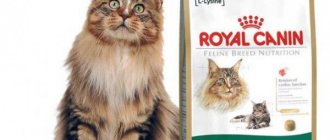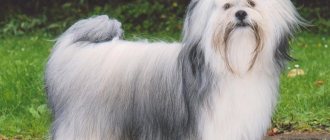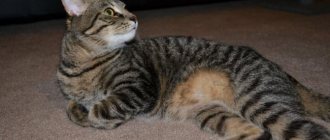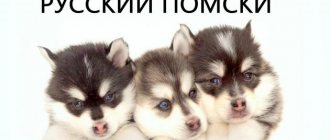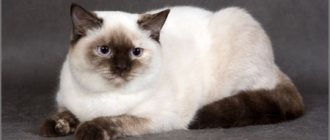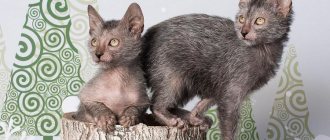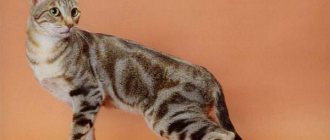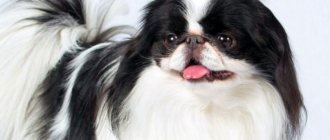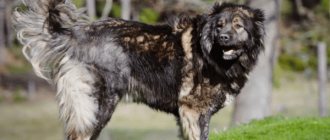Keeping a Maine Coon in an apartment
It is not worth keeping this breed in a cramped and small apartment. This will cause discomfort to everyone living - the cat and its owner. This breed requires quite a lot of space so that it feels at ease and uninhibited. You can arrange a corner where the animal will spend its free time.
This may not necessarily be a bulky and expensive design, the main thing is that it is comfortable for the cat and has everything it needs. The main elements are “mountain” and “hole”. The mountain is a safe place for the kitten, located on top of the entire structure. A hole is a place where an animal can be alone, away from prying eyes. This corner should contain:
- beds;
- places for games;
- climbing structures;
- a place to hide.
Bed
The size of the bed should match the size of the cat.
Based on this, you need to choose a large size bed for your Maine Coon – more than 60 cm in diameter. This breed does not tend to sleep curled up; they like to stretch out to their full length. Any shape will do. It is better to choose the material from soft fabrics. The bed should be durable, soft and comfortable. To do this, it is better to pay attention to:
- flock;
- tapestry;
- velours;
- microfiber.
Since the cat sheds, this item must be periodically cleaned of hair. It is worth taking a closer look at the anti-claw fabric. It withstands animal claws well and will last a very long time. A bed made of furniture fabric can be used for several years while maintaining its appearance.
You can choose holofiber or padding polyester as a filler. Parasites, fleas and other small pests do not grow here. Cats can be divided into three types - calm, active, medium active. Based on this, you need to choose an open or closed type. An open design is better for active animals, and a closed one is better for calm ones.
Carrying
The main thing in this matter is that the coon himself likes this carrier. Any restriction of movement is perceived by the cat as a deprivation of his freedom. That is why veterinarians recommend taming your pet to this accessory gradually. Getting to know each other takes place step by step. To begin with, the cat must sniff and examine any new object, climb into it and come out of it freely. Only when he gets to know her well can the carrier be used for its intended purpose.
The main criterion for choosing a carrier is its size. The animal should be comfortable first of all. There must be a window through which the animal will look at the world around it and there will always be fresh air inside. The Maine Coon tolerates the cold well; you should not choose overly insulated models.
There are different types of carriers:
- Bag. It has a frame, a solid base, a window and dense walls. These carriers are lightweight and comfortable.
- Backpack. Convenience lies in the freedom of the owner's hands. This form is not suitable for a Maine Coon, since the usable space is very limited. Such an animal simply won’t fit in it.
- Plastic container. Stable, well breathable, some models have wheels. They are easy to clean and durable. The disadvantage is that they are heavy and too bulky.
- Cell. Designed for transporting animals.
Usually, coon owners have several carriers at once, which are selected depending on specific situations.
Game complexes
The Maine Coon should have his own corner where he can play, relax and even sleep. Considering the size of this breed, choosing a play area should suit them. This piece of furniture must be well secured. This is important so that during games it does not roll over and cause harm to the health of the animal and others.
In such a corner there should be scratching posts, secluded places, and climbing equipment. If all this is present, the cat will feel comfortable and cozy here. Considering that this breed is distinguished by its increased activity, the animal will spend a lot of time in its playroom.
Play complexes for Maine Coons.
Description of the breed, character and habits
The breed belongs to the group of semi-long-haired cats. There are many versions regarding its origin. According to one legend, these animals arose as a result of intercourse between a cat and a female raccoon, from which Maine Coons inherited their unusual size and striped tail. The second version indicates that these pets appeared after intercourse with the North American lynx. However, both stories are nothing more than fiction, since it is impossible to obtain offspring as a result of interspecific crossing.
The truth is that Maine Coons are the natural population of the cat metropolis. The peculiarities of formation were determined by nature, which made the animals physically large and hardy in order to survive in the harsh winter conditions.
Indeed, the peculiarity of these cats is their size. An adult cat reaches a weight of 10–15, and a female – 6–8 kg. They develop slowly, reaching maturity by 4–5 years.
Maine Coons are very easy to care for, despite their gigantic size.
The animal's head is trapezoidal in shape, slightly narrowed in width and elongated in length, and the profile is slightly curved. The ears are set high, with tufts at the top. The body is muscular, reaches a length of 1.2 m. The neck is of medium length, the chest is wide. The limbs are large and muscular. There are tufts of wool between the toes on the paws. The size of the tail corresponds to 2/3 of the body length. The eyes are oval shaped. Their color can be green, golden, amber, yellow.
The coat is thick and silky. It consists of two layers: the first of them provides protection from cold, the second from moisture. The areas on the belly, back, collar area and sides are covered with the longest hair. The color can be varied. Only chocolate, lilac and fawn colors do not meet the standards. The lifespan of Maine Coons is 12–20 years.
Cats are calm, balanced and attached to their owner
In addition to their external appearance, an attractive feature of cats is their friendly nature and high level of intelligence. These animals have the ability to remember words and distinguish intonation, making them easy to train. They don’t really like to lie on their owner’s lap (with rare exceptions). But they prefer to spend time next to him. The Maine Coon can follow its owner wherever he goes.
As children, they have a playful character. But adult cats are calm and reserved. Animals do not immediately trust people. It will take some time to establish contact with them. It won't be difficult to train them to walk on a leash.
Important! Unlike representatives of other breeds, these cats are not afraid of water. Maybe because their ancestors traveled on ships.
An amazing fact is the peculiarity of their voice. When meowing, these giant cats make a very thin sound, which introduces a certain imbalance with the impressive appearance of the animal.
Tray training
If a kitten is purchased from a breeder, it means that it is already 2-3 months old, and therefore, it knows what a litter box is.
In this case, the baby only needs to be shown a new place where the kitten should go to the toilet. If, for example, a kitten lives in a large house, it is better to have several such litter trays. Some Maine Coons have a characteristic habit of going to one litter box when needed, and to another when needed.
If litter box training occurs on your own, you need to pay attention to the animal’s behavior. You can recognize that a kitten needs a toilet by its behavior:
- the animal begins to worry;
- looks for a secluded place;
- squeaks or meows.
If this happens, you most likely need to plant it in a tray. The owner must carefully move his pet. If the kitten does not understand what is required of him, the person should dig a little into the filler with his hand, thereby letting the cat understand what needs to be done here. If you were unable to do this in time and the kitten made a puddle, you need to wipe it off with napkins and put them in the tray. By the smell, the kitten will understand where he needs to go.
Tray training.
Intimate question
A cat's litter box is, at first glance, a simple and unassuming item, but not only the order in the house, but also the well-being of the animal depends on it. If a cat is uncomfortable fulfilling its natural needs, it becomes nervous, which affects its behavior and well-being.
It is better to buy a toilet for giant coons, the largest one, open or with a mesh. A toilet-house is convenient for owners, but not every animal recognizes such a design, and the filler in it takes longer to dry than in open trays.
When picking up a kitten from the nursery, it wouldn’t hurt to get acquainted with the “common areas” to which the little Maine Coon was accustomed from the first weeks of life, and buy the same tray and filler for home - at least for the first time, while the baby gets used to the new place . You can also take some used litter with you and put it in a tray at home - so that it is easier for the kitten to understand by smell where the toilet is in its new home.
Wood filler is suitable for Maine Coons - it absorbs moisture well and absorbs odors, and is also inexpensive. The only drawback is that the filler is light and spills out of an open tray if the cat likes to dig into it. Expensive silica gel litters are easy to clean, require replacement once a month, and retain odors, but many cats do not like them because of the crunching noise they make. Clumping litters are good if there are one or two cats in the house. They are environmentally friendly, economical, they can be thrown into the sewer, but if there are a lot of animals, cats will trample the lumps and spread dirt on their paws.
Caring for a Maine Coon is not only about caring for the appearance and health of the pet, but also moments of communication with an animal that craves attention. Even if some procedures are not very pleasant for a cat, but if a person and his pet trust each other, neither bathing, nor trimming nails, nor taking pills will become an insoluble problem.
Rules for walking a pet
There are two types of walking - independent and with the owner on a harness. In the first case, the cat goes for a walk and comes home in the evening to sleep. This is what they usually do in a village or country house. Walking on a harness is safer, as the cat is always under control. For the city, this method is more preferable, especially for the kuns, who can simply be stolen. In addition, the animal may encounter stray dogs or get hit by a car.
It is better to walk your pet in quiet green places - parks, squares. There are a number of pros and cons of such walks. The advantages include:
- the animal can show its hunting instincts;
- the sun is good for the animal;
- a cat can sharpen its claws on trees;
Walking the Maine Coon.
Street walking also has significant disadvantages:
- there is a risk of contracting dangerous diseases and infections;
- meeting other animals;
- the cat may get scared of something and run away;
- the cat may eat some dangerous foods (poisoned meat) scattered in the bushes.
Considering that city conditions are not the most comfortable for an animal, it will be much safer in your own apartment. A cat can throw out its energy by playing with its owner or in its play area. After a walk, the animal needs to be bathed, especially since coons like this procedure. Before going on a walk, you should also treat them with flea and tick sprays or wear a special collar.
Prevention is the key to health
Caring for a Maine Coon primarily involves caring for the pet’s health. Coons, like cats of other breeds, must be vaccinated once a year against rabies, calcivirosis, panleukopenia and rhinotracheitis, and also periodically treated against ticks, fleas and helminths. Even if the animal does not leave the house, parasite larvae can be carried on the soles of shoes, and if the cat is taken to the country or it often participates in exhibitions, vaccination and deworming are vital for it.
Useful to read: Features of houses for Maine Coons
Maine Coons need vitamins for a healthy, beautiful coat, strong bones and teeth, and to maintain immunity. It is especially important that your pet receive vitamin supplements during growth, pregnancy, or illness. Special vitamin complexes for cats have been developed and can be purchased at veterinary pharmacies.
Feeding your cat pills is a problem for many Maine Coon owners. Animals spit out the medicine, and if it is mixed with a treat, they manage to eat the food and bypass the tablet. In this case, the medicine is turned into powder and combined with liquid food. If this does not help, there is only one way out - put the tablet in the cat’s mouth, on the root of the tongue, close its jaws with your hand and hold them until the animal swallows the medicine.
In addition, clean semi-long-haired Maine Coons need a special paste for removing hair. While licking itself, the Maine Coon swallows fur, it gets into the stomach, rolls into hair balls there and causes discomfort to the animal, leading to constipation, coughing, and even intestinal obstruction. The paste helps solve this problem, especially during shedding. It can be mixed with food, or it can be given to the cat separately.
Water treatments for Maine Coon
Before you give your coon a bath, you need to know a few basic recommendations from veterinarians and breeders.
First you need to prepare the animal. To do this, you need to calm him down so that the kun does not experience stress and fear. It is better to bathe in a warm room where there is no noise. It is better to bring the water to room temperature. A separate issue is the choice of shampoo for the animal. Liquid ones that do not contain aggressive components that can sting the eyes or burn delicate mucous membranes are well suited.
Particular attention should be paid to fur. Therefore, it is worth purchasing special formulations for long hair. Regular soaps or shampoos should not be used on people. You shouldn’t bathe coons often; optimally, once every two months. The frequency may vary depending on the degree of contamination. If your cat walks outside, you need to wash it much more often - once a week.
Coons have a distinctive feature - they are good with water and love to swim, and he will like such water procedures.
Bathing a raccoon cat
Bathing is an important part of Maine Coon care. Like all cats, representatives of this breed are not too fond of water treatments that involve getting their fur wet, although they enjoy playing with water. Coons are washed once every few months; urgent bathing is recommended if the pet is dirty or shedding (washing speeds up the shedding process - dead hairs are easier to remove). You should definitely bathe the animal before the exhibition.
For water procedures, you need shampoos (washing and tinting), conditioner, sponge, towel, hair dryer, as well as hair styling products (gels, creams, powders).
Bathing a Maine Coon goes like this:
- Fill a sink or small basin with warm water (not lower than +38°C). You can put a terry towel on the bottom so that the paws do not move apart and the cat does not get nervous.
- Holding the Maine Coon by the scruff of the neck, moisten the fur with a sponge and gently rub shampoo intended for long-haired cats into it, from the back to the tail.
- The cat should never be rubbed, otherwise the fur will become matted.
- Wash your hair without shampoo, do not allow detergent to get into the animal’s mouth, eyes and ears.
- You need to wash your Maine Coon's fur under a weak shower, from head to tail. Be sure to remove all the shampoo to make the coat squeak, otherwise skin irritation may occur. In addition, if the wool is poorly washed, it appears unkempt.
- Apply a special conditioner to the cat's fur, then rinse it thoroughly.
- Dry the animal with a towel, maybe a paper towel, so that the long fur does not get tangled from wiping.
- Wrap the Maine Coon in a large towel and take it to a warm, draft-free room.
- Dry the fur with a hairdryer (if the cat can tolerate the sound of it).
- Brush the cat. Pay special attention to the belly and “pants”, where the fur tends to curl in ringlets; it is advisable not to comb the tail at all, and comb the collar from bottom to top for fullness.
Cleaning ears, eyes and nose
The Maine Coon's eyes, ears and nose need to be cleaned regularly as dirt and natural secretions accumulate here.
Mucus accumulates in the corners of the eyes, on which various dirt sticks. If these black spots are not removed, they can cause various eye infections. In this case, you will have to contact a veterinarian. It is much easier to prevent such diseases. You can remove it with a cotton sponge dipped in clean warm water or weakly brewed black tea.
The cat's ears require special attention. They are inspected once a week and cleaned if necessary. Healthy ears should have a pink tint.
If during inspection a buildup of sulfur is detected, it must be removed. There are special solutions for this that can be found in zoological stores.
Nutrition - what and how to feed?
Proper feeding of Maine Coons is an important part of a cat’s healthy life. It is important to choose the right food and water containers for your pet.
It is necessary to take into account the fact that in the wild, the ancestors of cats, before drinking, try to clear the surface of the water from debris, fallen leaves, and twigs. At the same time, water is sprayed in different directions. Pets have retained this reflex. The Maine Coon may even knock over a bowl of water or move it along the floor. Therefore, the drinking container should be moderately heavy or fixed to the floor so that it does not move and cannot tip over.
The food bowl should be kept away from the water container. Otherwise, splashes that get into the food bowl can ruin the food. If the cat stays at home without its owners for a long time, it is better to purchase a water bottle. Water should always be fresh and clean.
Feeding Maine Coons has its own rules:
- You only need to feed your cat dry food of premium quality. It contains the necessary vitamins and various nutritional supplements that are important for the health and normal development of Maine Coons. Can be combined with canned food;
- if you feed with natural food, then the basis of the diet (at least 80%) should be meat and dairy products, vegetables and grains;
- If the cat's diet consists exclusively of natural products, it is necessary to regularly give vitamins;
- with a mixed diet, dry food should be the basis, and natural food should be additional.
What natural products can you feed your Maine Coon:
- meat: poultry, beef (raw and cooked), rabbit, lean lamb, chicken livers and hearts.
- vegetables: carrots, beets, cabbage, cucumbers, zucchini, pumpkin, tomatoes;
- hard cheese;
- eggs: yolk once or twice a week, boiled or raw;
- boiled sea fish, seaweed and other seafood;
- cereals, bran;
- fermented milk products: cottage cheese, yogurt, kefir, fermented baked milk (milk can only be given to kittens under 3 months of age);
- cereals: three to four times a week as an addition to boiled meat;
- sprouted grains: wheat and oats.
Important!
It is prohibited to add salt, sugar, or spices to cat food. It is strictly forbidden to give your pet beef and chicken bones, fatty pork, duck, goose, smoked meat products, sausages, sugar, potatoes, legumes, and chocolate.
Cats need to eat fresh greens periodically. To prevent your pet from being drawn to dusty, dirty grass during a walk, you need to sow grass seeds (wheat, oats) in a low, wide container (box) at home and allow the cat to eat the young sprouts.
If a cat is allergic to any of the food or products, the allergen should be removed from the diet.
Cat food should not be hot or cold. It should be at room temperature. Kittens need to grind their food. The kitten should eat at least 5 times a day. This principle must be maintained for up to 2 months. From six months onwards, the frequency of feedings is reduced to three times a day, and eight-month-old cats should be switched to two meals a day.
How to care for your fur
Maine Coon coat care involves regular brushing.
Owners need to have two combs - one with sparse teeth, the other with frequent ones. To begin with, the cat is combed with a sparse comb. This is how you get rid of matted fur. After this, you need to use a fine-toothed comb. It is advisable to start the procedure from the head, moving towards the tail. It is advisable to do this frequently. This will prevent tangles from forming, which can only be removed by cutting. If there are a lot of such hairballs, you need to cut the animal with a clipper. If the owner is afraid of causing pain to the animal, it is better to contact specialized salons or a veterinarian.
The condition of the fur can be used to judge the health of the animal. If it is rare, has increased fat content or bald spots, you should take a close look at the condition of the coon. This can often happen with metabolic disorders. The condition of the coat is greatly influenced by the presence of a balanced diet; the cat must receive all the substances necessary for its body - minerals, vitamins. Vitamins B and E are especially important. Due to their deficiency, hair can actively fall out and lose its color.
Shedding
Maine Coons have three types of shedding:
- hormonal;
- seasonal;
- health related.
The first two types are a normal natural phenomenon. The average lifespan of a hair in a cat of this breed is approximately 25 days, after which the hair falls off and a new hair begins to grow in its place.
Seasonal molting occurs to regulate heat exchange. In nature, it occurs twice a year. Within a month, the cat sheds old and excess fur. The timing depends on temperature changes in the external environment.
For pets, these dates may shift. Dry air can cause increased shedding. This way the cat is saved from overheating its body. In some cases, wool and tangles can cause diaper rash to form on the skin.
If the animal is given enough attention, such phenomena do not occur. Shedding can also begin as a result of hormonal imbalances - the cat’s pregnancy, the period of milk feeding, or estrus. In such cases, the animal may become completely bald.
With the restoration of hormonal levels, the cat returns to its previous appearance. Molting can be a consequence of disease. If the owner notices that the cat has begun to lose its fur and there is no apparent reason for this, it is worth immediately going to the veterinary clinic for an examination.
Fighting tangles
You can bring your pet's fur yourself. Matted fur and tangles on it especially spoil the appearance of a cat. To deal with this you need:
- brush the animal regularly;
- purchase a webbing cutter;
- use brushes or a glove for combing;
- choose high-quality animal hair care products.
If you brush your coat regularly, tangles will not form. Not too large clumps of hair can be straightened out with a wide-tooth comb. In advanced cases, this problem can only be dealt with by cutting it off.
Diseases and breed defects
Due to the natural origin of the breed, Maine Coons have good immunity and fairly good health. Along with such native breeds as the Kuril Bobtail and Russian Blue, Maine Coons rarely get sick.
However, they have a predisposition to a small number of genetic diseases, represented by:
- hypertrophic cardiomyopathy - a heart disease that manifests itself in older animals and causes pulmonary edema, tissue, paralysis of the hind limbs and death;
- spinal muscular atrophy - extensive damage to neurons in the spinal cord, most often manifested at the age of four to five months, and accompanied by a characteristic swaying in the back of the body when walking, as well as difficulty in jumping;
- renal polycystic disease - a slowly progressive disease that causes severe disruptions in the functioning of the kidneys;
- hip dysplasia, which manifests itself in animals in adulthood and causes lameness.
Compliance with the rules of care and maintenance of Maine Coons, including periodic preventive examinations for the purpose of early detection of genetic diseases, allows you to make the life of your pet as full and as long as possible.
Return to content
Care for claws and teeth
If your cat receives dry food, you can brush your teeth once a month.
When receiving soft food, you need to clean it more often - 2-3 times a month. The brush is selected depending on the size of the animal. The animal takes care of its claws on its own, the main thing is that it has a special scratching post. Otherwise, the upholstered furniture or wood in the house will suffer.
Reproduction and its prevention
Let's look at the peculiarities of pregnancy in Maine Coon cats. As well as methods for preventing it if the owner does not plan to engage in breeding.
Pregnancy and childbirth
Pregnancy is an important stage in a cat's life.
A cat's pregnancy can be detected 20 days after mating. Her nipples become enlarged and turn a bright pink color. Habits often change. Hormonal changes can provoke toxicosis. Pregnancy lasts 65–67 days. But deviations are also possible. If babies are born before 60 days, they appear weak and often not viable. During this period, contact with other animals is undesirable for the cat. They can be carriers of infections.
Important! You cannot vaccinate or give your cat anti-worm medications. This should be done before pregnancy or after this period.
Two weeks before the due date, arrange a place for the cat and lay out a clean diaper. From day 62, monitor her constantly.
- The first sign of labor is the passage of the plug. It resembles mucus. After this, the kitten may appear in a few hours or days.
- Before contractions, the cat's body temperature drops to 37°C.
- If she begins to show anxiety or hides in a corner, then this indicates the beginning of the process. Place the cat in the prepared area. The newborn kitten will be in a bubble. The placenta will come out next. If this does not happen, you need to pull it out by the umbilical cord.
- A large kitten may get stuck. You need to take a clean rag, grab it and pull it lightly. But you should not grab the paws or tail, so as not to injure the baby.
- When the kitten comes out, tear the film near the mouth. The bubble will be removed from his head. We cut the umbilical cord at a distance of 2 cm from the tummy. It cannot be tied. Give the baby to the cat. If the kitten doesn't lick it right away, wipe its mouth with a napkin and make sure it can breathe.
Castration and sterilization
Cats are capable of producing offspring at the age of 8–10 months. Therefore, if you are purchasing an animal not for breeding, you need to take appropriate measures. Cats undergo castration - removal of the testes. Females are sterilized. This operation is carried out in several ways. A cat may have her ovaries, her uterus and ovaries removed, or just her uterus. The duration of the procedure is 5–7 minutes for males and 10–20 minutes for females. After 10–12 days, the stitches are removed. They do not overlap males at all.
The need for such manipulations is due to the presence of a reproductive instinct in cats. Failure to satisfy this need causes animal suffering, restless behavior and illness. The cat will roll on the floor and scream both day and night. To withstand such a test, strong nerves are required. The cat will begin to mark its territory.
Nutrition
A Maine Coon consumes more calories per day than a regular cat, but overfeeding is unacceptable: it leads to pathologies of the joints and digestive organs. You can feed your pet both natural food and ready-made store-bought food.
When feeding natural food, the menu is carefully selected; the diet must be balanced. It includes:
- meat;
- boneless sea fish fillet;
- egg yolk;
- cottage cheese, kefir;
- milk porridge;
- vegetable stew.
You can't give your cat a treat:
- fatty meat (pork, lamb);
- sweets (including dairy);
- fatty dairy products, cream;
- bones;
- food from the master's table.
If the choice is made in favor of ready-made food, then choose high-quality, premium or holistic-class. Best options:
- Royal Canin.
- Nutra Gold.
- Josera.
- Biomill.
- Hills; Choice.
- Orijen.
Requirements by month of life
Caring for a Maine Coon kitten is more difficult than caring for an adult. While the pet is small, the owner must carefully select the diet and monitor the animal’s weight in order to identify developmental disorders in time.
The table shows the developmental features of a Maine Coon kitten at different periods of life, and provides care recommendations for the owner.
| age, month | developmental features | care recommendations |
| 2 | the kitten begins to feed on its own, its teeth are formed | You should feed with cereals with milk, there should be 5-6 meals a day in small portions, the main food is gradually introduced, it is advisable to buy toys for sharpening teeth |
| 3 | weight grows very quickly, doubles in a month, the body stretches, the coat lengthens | You need to regularly play outdoor games with your pet, the number of meals is kept to 5–6 per day, the portions of the main food are increased |
| 4 | the kitten eats basic food, knows how to use the litter box, and remains playful | scalded or boiled meat is added to the diet |
| 6 | Maine Coon grows more slowly, the teenage stage of life begins | if breeding is not planned, the animal should be castrated |
| 8 | the cat is still growing, but the teeth are already formed, you can give solid food | dry meat, cottage cheese, and other fermented milk products are added to the diet |
| 12 | Maine Coon becomes an adult | food and care standard for the breed |
